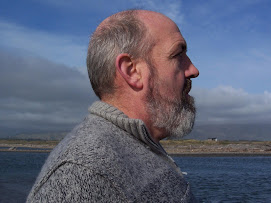I cross-post my comment from the blog here, but I highly recommend that you visit the original post, and the ensuing commentary - essential reading for anyone interested in technology led change in government.
===============
Good to see the conversation getting to the heart of the challenges that the TaskForce faces.
Government is a large and complex organisation, with most incentives geared towards maintaining the status quo (because that is the natural state of power in any large complex organisation). “2.0″ is disruptive technology that will re-engineer information flows within government and between government and the people. But the natural order is for strong resistance from within (Machiavelli first pointed this out), and technology will only be effective when operating in combination with other forces.
In my view there are four forces for change that can be channelled to achieve change in government – leadership, economics, heroes and citizens.
Leadership has to come from political leaders – they alone are the ones that can adjust the values that public servants operate within. However, other political issues – education, healthcare, taxation, foreign affairs, environment, transport, law and order – will always be higher up the agenda than reform of the bureaucracy.
Economics is a powerful force for change – organisations change when they can no longer afford to stay the same. In NZ, where I am based, the financial crisis that we faced in the 1980s (as a result of the collapse of our agricultural exports to Britain arising from the EU) led to major reform of the public service. There have been similar pressures in most other jurisdictions, and there is some indication that the current global financial meltdown will create some additional pressure for change. As the current catch phrase goes: “never waste a good crisis”.
Heroes is the word I use for those who operate within the public service to drive change from within. These can range from “skunk-works” activities to free up government information, to personal leadership of high visibility transformational change programmes by senior public servants. The bigger the change, the bigger the fall, and the less incentive to take the risk.
Citizens are the most powerful force that will, over time, create change. The role of txt messaging in the fall of the Estrada government in the Philippines in 2001, and the recent power of twitter in Iran after the election are two dramatic examples. Other examples include the use of people’s choice to drive better performance in service delivery in government administration.
Effective public service transformation have components of all four of these forces acting together. I give three examples here, I am sure anyone on this discussion can create their own:
1. The movement that is currently sweeping through American federal government – started by a combination of leadership (Obama) and citizens (internet campaigning), reinforced by economics, and some emerging heroes within the administration.
2. The current change in California, almost entirely driven by economics at this stage, and needing an enrolment of leadership, citizens and heroes, if it is to pull out of a downward spiral.
3. Government reform in the UK in the 1990s, which used a combination of leadership (Tony Blair) and citizen choice, supported by heroes in various government agencies and only a small amount of economic pressure.
So what should we do if we want to drive government transformation ? Make sure that all four of these forces for change are harnessed to a common future vision. Government 2.0 can deliver lower cost government, economic growth, citizen engagement, and rewarding job opportunities for those in the public service with the courage to seize them.

